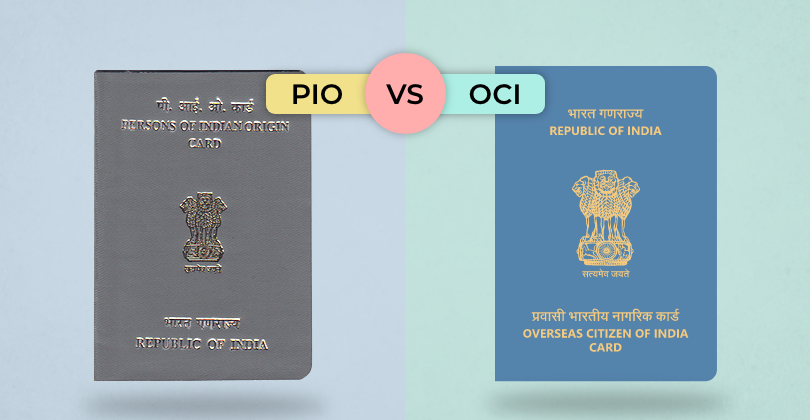Are you of Indian origin and living abroad? You've probably come across terms like PIO and OCI. These cards offer different benefits, but it can
Technological improvements have been a major factor in the dramatic change of India's financial landscape in recent years. The growth of digital financing is one of the noteworthy developments of this transformation.
Digital lending is the practice of disbursing loans, using online channels. The traditional lending landscape in India has been significantly altered by this novel strategy, which provides many advantages for both borrowers and lenders.
An in-depth analysis of what digital lending is, how it functions, and the many benefits it offers to the Indian economy have been discussed in this article.
What is Digital Lending?
Digital lending, also known as online lending or fintech lending, entails using digital platforms and technology to streamline the lending process. It involves the application, approval, and disbursal of loans through online platforms , eliminating the need for physical paperwork and reducing the time and effort compared to the traditional lending process.
Unlike conventional lending institutions such as banks and credit unions, digital lending platforms like KreditBee operate online and leverage advanced technologies such as artificial intelligence, machine learning, and big data analytics to assess the creditworthiness of potential borrowers.
These platforms provide loans to individuals and businesses that may have limited or no credit history, often overlooked by traditional lenders.
How Digital Lending Works in India
The digital lending ecosystem in India is marked by a synergy between technology, data, and finance. The process typically involves the following steps:
-
Application: Borrowers apply for loans through digital lending platforms, often via mobile apps or websites. The application process is simple and user-friendly, allowing borrowers to provide essential personal and financial details.
-
Data Collection and Analysis: Digital lending platforms harness the power of data analytics to assess the creditworthiness of applicants. They analyse various data points, including financial transactions, social media behaviour, educational background, and more, to build a comprehensive profile of the borrower's credit risk.
-
Credit Scoring: Based on the data analysis, the platform generates a credit score for the applicant. This score determines the borrower's creditworthiness and helps the lender make an informed decision on loan approval and interest rates.
-
Loan Approval: Once the credit scoring is complete, the platform processes the loan application. The automated system approves or rejects the loan based on preset criteria and algorithms. This swift process eliminates the need for manual intervention in expediting loan approval.
-
Disbursal: Approved loans are disbursed digitally into the borrower's bank account. This eliminates the need for physical interactions and reduces the waiting time associated with traditional lending methods.
-
Repayment: Borrowers can repay their loans through digital payment methods, including mobile wallets, online banking, and automatic deductions. Digital lending platforms often offer flexible repayment options tailored to the borrower's financial situation.
📗 Related reading- Best Personal Loan Providers in India - 2023
Benefits of Digital Lending in India
The emergence of digital lending in India has brought about a host of benefits that cater to both borrowers and lenders, reshaping the financial landscape of the nation:
-
Inclusivity and Accessibility
One of the most significant advantages of digital lending is its ability to extend credit to segments of the population previously underserved or excluded by traditional financial institutions. By leveraging alternative data sources, digital lending platforms can assess the creditworthiness of individuals who do not have a conventional credit history.
-
Speed and Convenience
The streamlined process of digital lending significantly reduces the time taken from application to loan disbursal. This is crucial in emergency situations when individuals and businesses require quick access to funds. The convenience of applying for loans from the comfort of one's home through a smartphone or computer is a game-changer.
-
Reduced Operational Costs
Digital lending platforms operate with lower overhead costs compared to traditional banks. The absence of physical branches, reduced paperwork, and automated processes contribute to cost savings. These savings can be passed on to borrowers in the form of competitive interest rates and deduction of various fees.
-
Efficient Risk Assessment
Traditional lenders often rely on a limited set of criteria to assess creditworthiness. Digital lending platforms, on the other hand, employ advanced algorithms to analyse a broader range of data points, resulting in more accurate risk assessment. This data-driven approach reduces the likelihood of defaults and non-performing loans.
-
Enhanced Customer Experience
The user-friendly interfaces of digital lending platforms make the borrowing experience hassle-free and transparent. Borrowers can track their application status and repayment schedules and access customer support through digital lending platforms. This fosters trust and strengthens the relationship between borrowers and lenders despite the absence of face to face communication.
-
Leveraging Technology
Digital lending platforms leverage cutting-edge technologies such as artificial intelligence and machine learning to continuously refine their credit assessment models. This adaptability enhances the accuracy of credit decisions and allows lenders to offer more personalised loan products.
-
Boost to the Indian Economy
Digital lending has the potential to inject vitality into the Indian economy by providing easy access to credit for Small and Medium-sized Enterprises (SMEs). These businesses play a crucial role in economic growth and job creation. By enabling SMEs to secure timely funding, digital lending supports their expansion and contributes to overall economic development.
Challenges and the Way Forward
While the benefits of digital lending are undeniable, certain challenges need to be addressed for sustainable growth:
-
Data Privacy and Security: The extensive use of personal and financial data in digital lending raises concerns about data privacy and security. Stricter regulations and robust cybersecurity measures are essential to ensure the protection of sensitive information.
-
Regulatory Framework: The evolving nature of digital lending requires a regulatory framework that keeps pace with technological advancements. Clear guidelines are necessary to prevent predatory lending practices and ensure fair treatment of borrowers.
-
Risk Management: As digital lending platforms target borrowers with limited credit histories, effective risk management is crucial. Striking the right balance between inclusivity and responsible lending is essential to prevent over-indebtedness.
-
Financial Literacy: Ensuring that borrowers understand the terms, conditions, and implications of their loans is essential. Initiatives to promote financial literacy and educate borrowers about digital lending can prevent misunderstandings and defaults.
Conclusion
Digital lending is a disruptive force that is reshaping the lending landscape in India. By leveraging technology, data analytics, and innovative credit assessment methods, digital lending platforms are democratising access to credit and spurring economic growth.
The benefits of speed, inclusivity, convenience, and cost-efficiency position digital lending as a promising solution to address the diverse financial needs of individuals and businesses in India.
As the industry continues to evolve, collaboration between regulators, fintech companies, and traditional financial institutions will be crucial to ensure a balanced and sustainable ecosystem that benefits all stakeholders.
AUTHOR
KreditBee As a market leader in the Fintech industry, we strive to bring you the best information to help you manage finances better. These blogs aim to make complicated monetary matters a whole lot simpler.







